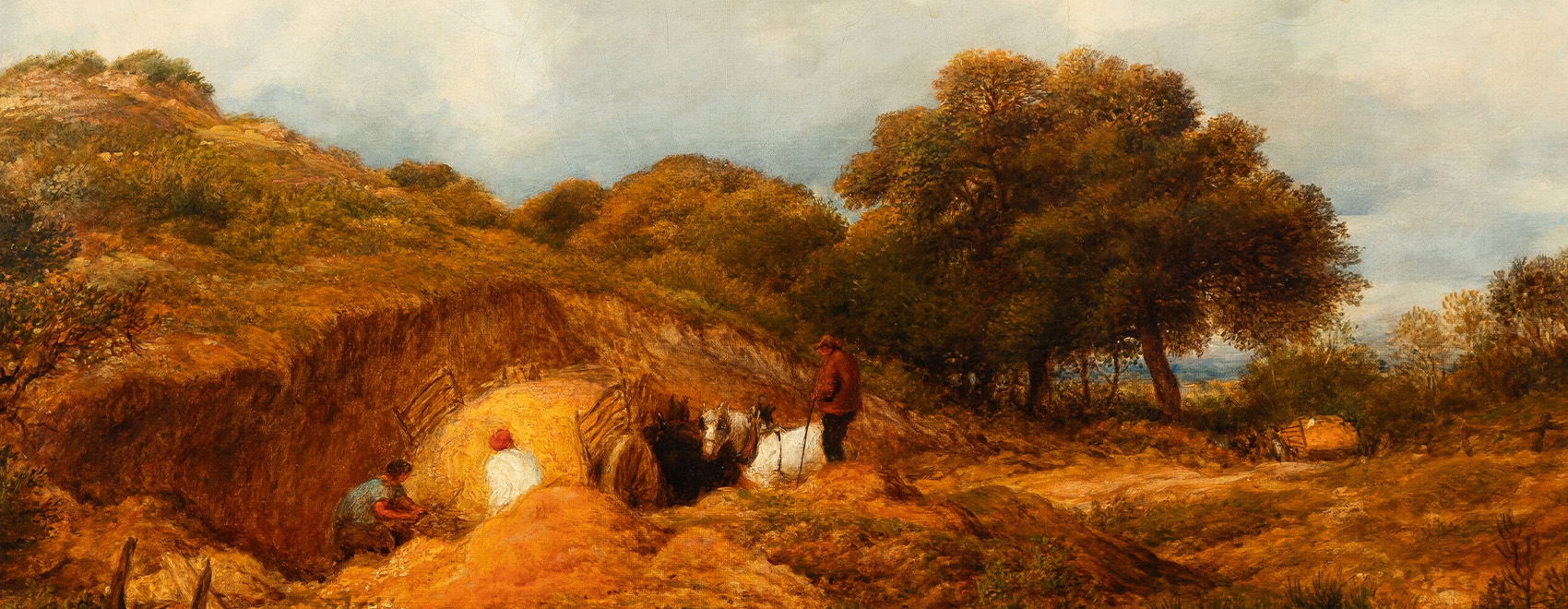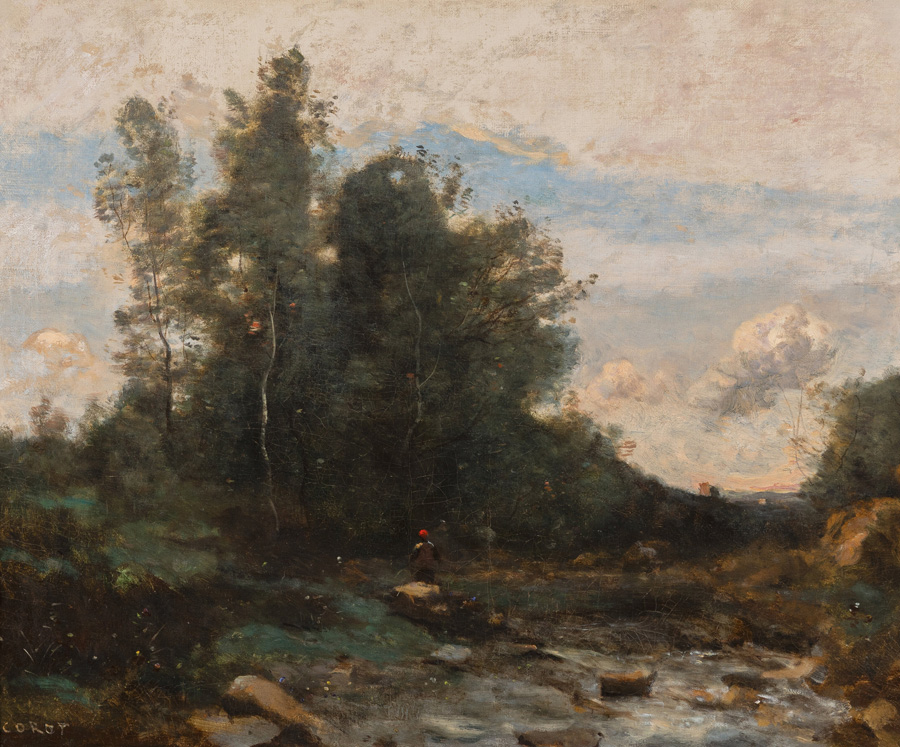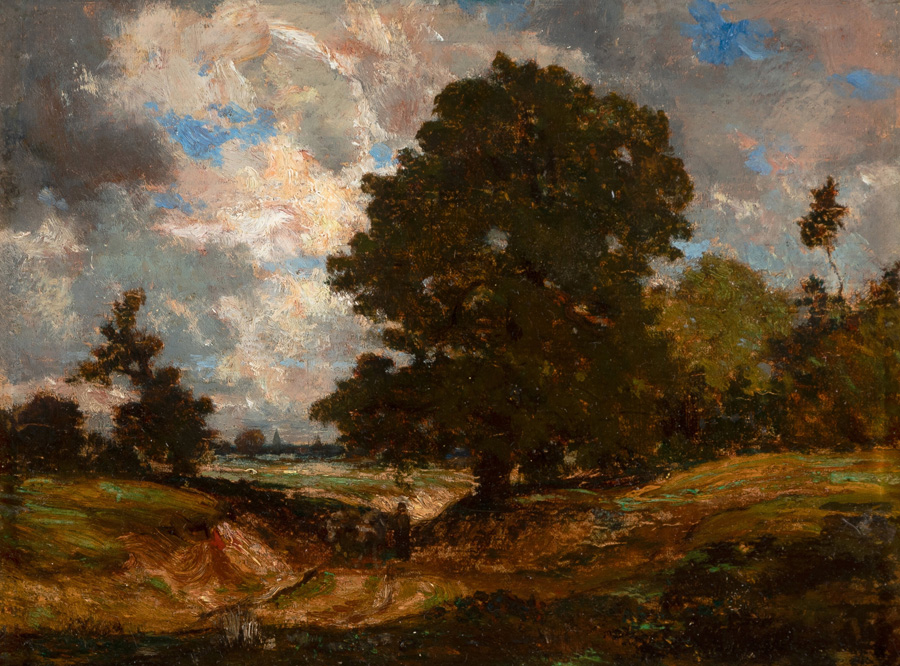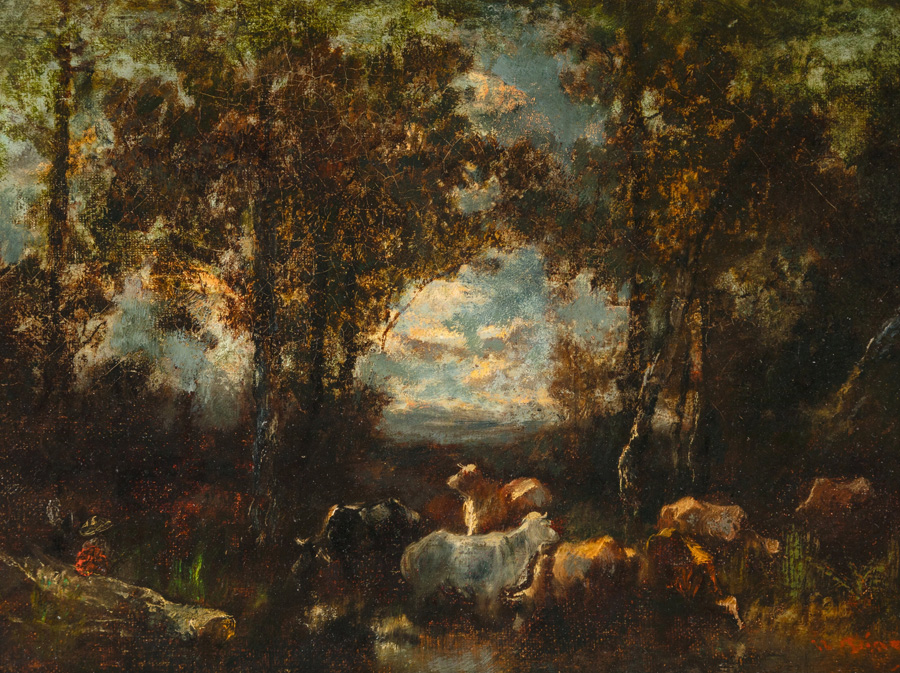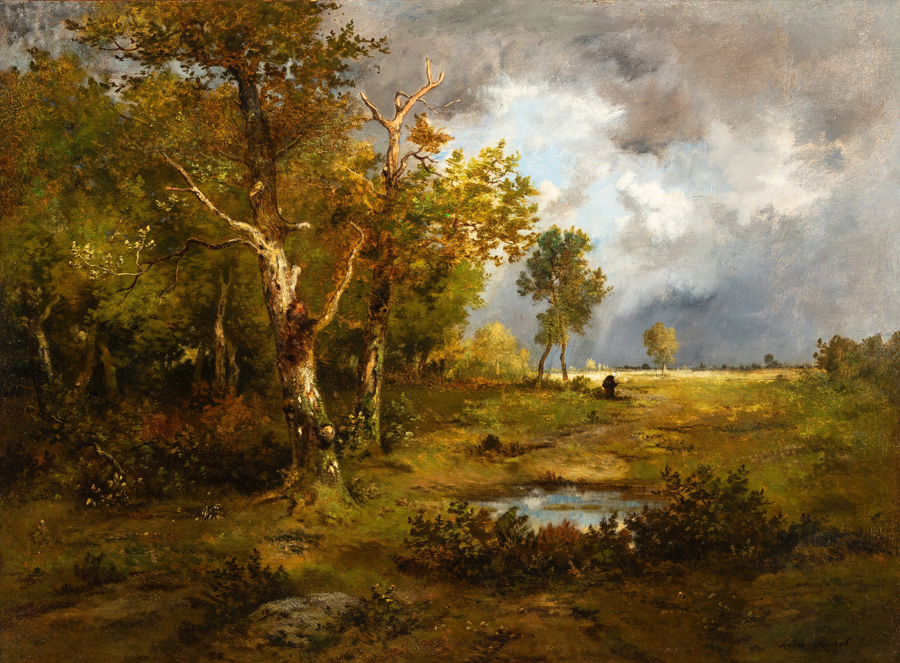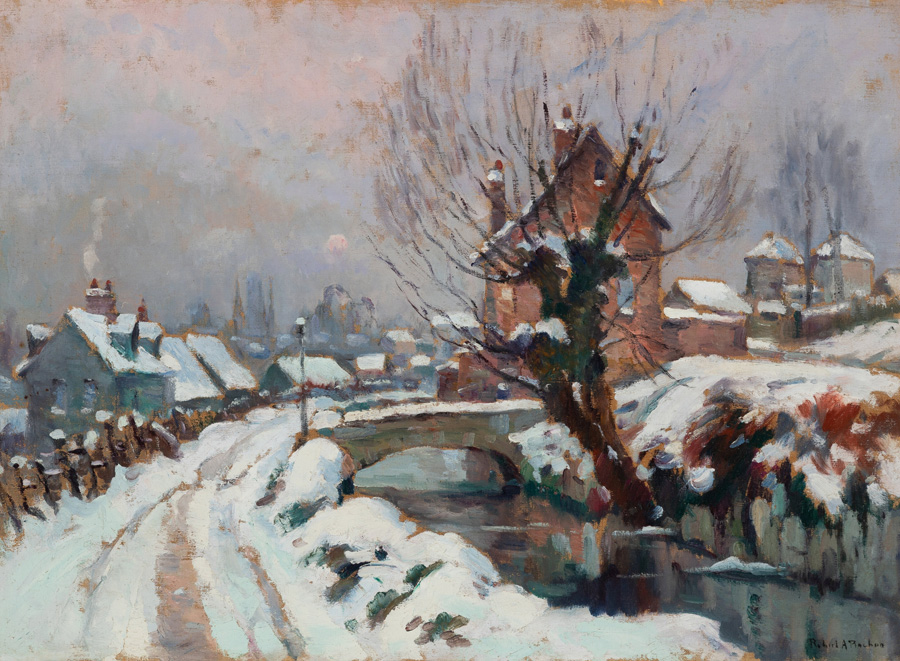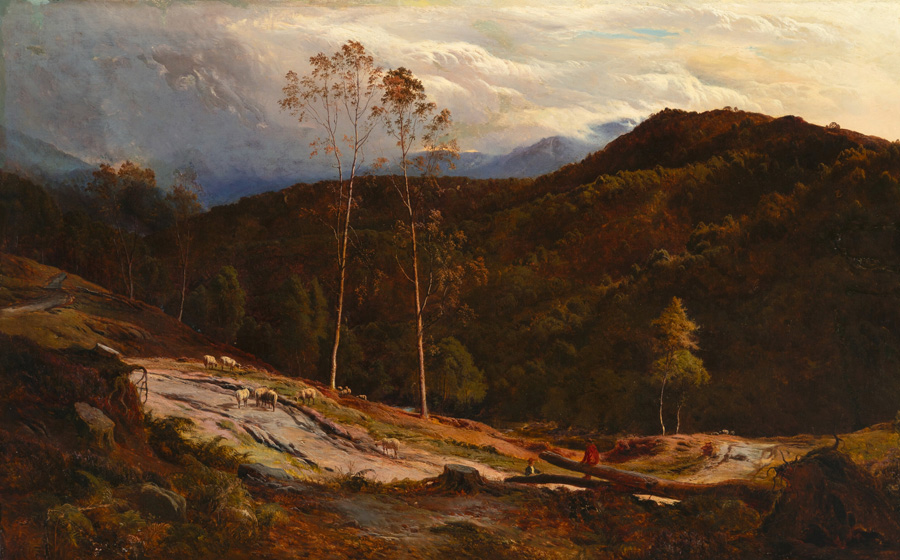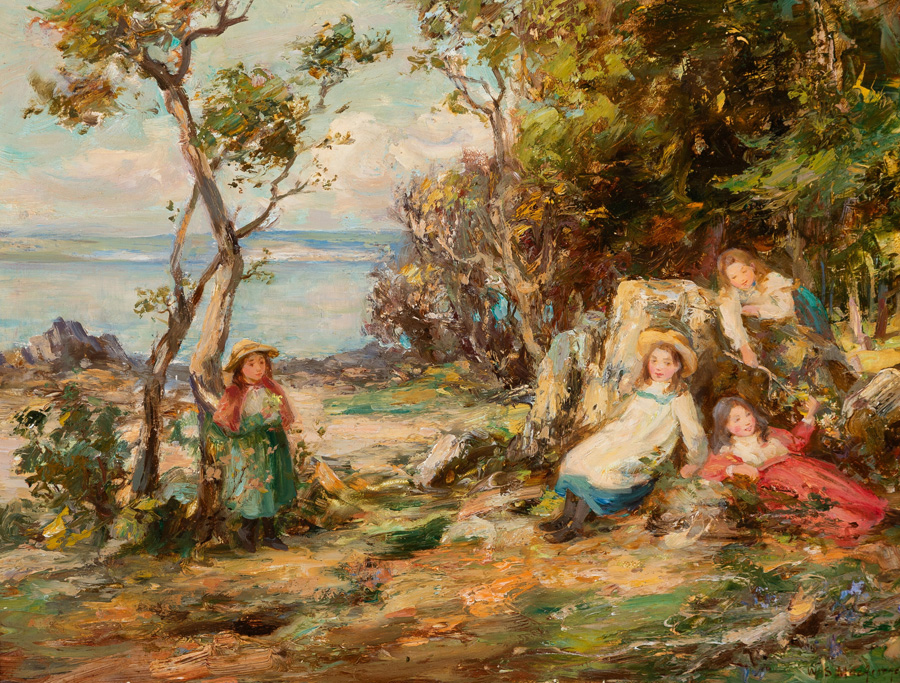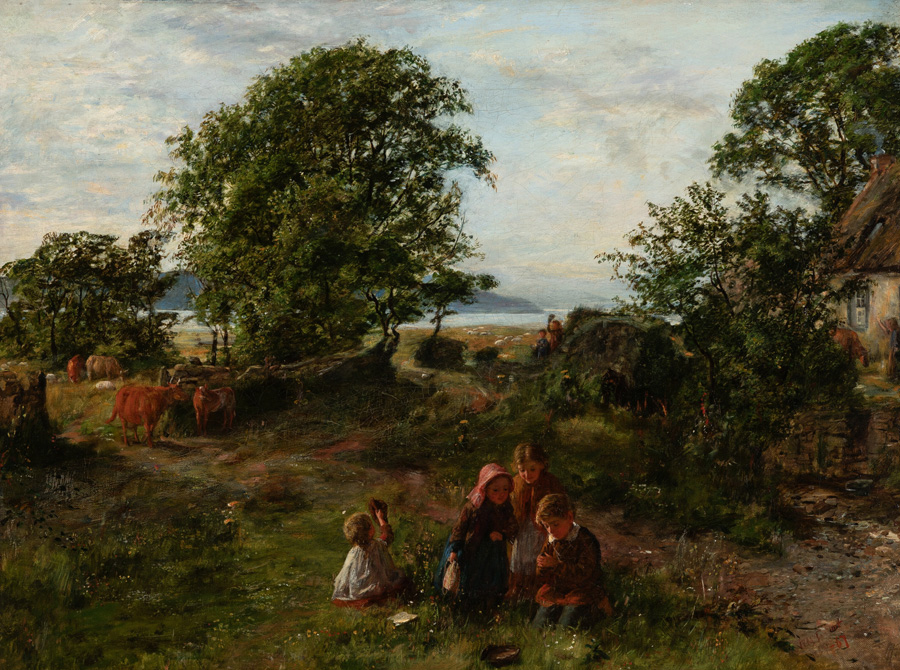THESE SCENES CAPTURED LIFE IN THE COUNTRYSIDE IN A WHOLE NEW WAY
By Seth Armitage and Dr. Marianne Berardi | November 4, 2025
Let’s take it outside! Landscape painters in 19th- and early 20th-century France and Britain took these fighting words quite literally in their effort to create a fresh approach to painting, which eventually gave birth to Modern art. Their fisticuffs were not against each other (usually!) but rather against the old way of making art, in the studio, working slowly and painstakingly to fashion paintings of nature that sat at one remove from them, outside.
New approaches demanded new gear and ways of working. This new breed of artists opted for material that was more portable such as smaller panels and paints in tubes, and they needed to dress for the elements as they headed into the countryside to redefine the possibilities of painting a landscape. The trailblazing Barbizon artists, British landscapists, and later the French and Scottish Impressionists shared a deep commitment to nature as both subject and source of artistic inspiration. Their goal was to capture direct, sensory experience – to paint what they saw and felt in the open air. Leaving behind the comfort and conventions of the studio, these painters roamed the Forest of Fontainebleau, wandered the snowy paths of Normandy, trekked across Wales, and waded along Scotland’s shores, painting not only what they saw, but their experience of it.
Jean-Baptiste-Camille Corot (French, 1796-1875), ‘Le torrent pierreux (crépuscule),’ circa 1865-1870. Oil on canvas. 19-1/4 x 24-3/8 inches (48.9 x 61.9 cm). Available in Heritage’s November 18 Fine European Art Signature® Auction.
Jules Dupré (French, 1811-1889), ‘Paysage au grand arbre.’ Oil on cardboard laid on panel. 7-5/8 x 10-1/8 inches (19.4 x 25.7 cm). Available in Heritage’s November 18 Fine European Art Signature® Auction.
The immediacy of that vision is captured in a remarkable group of landscapes offered in Heritage’s November 18 Fine European Art Signature® Auction. In the mid- to late 19th century, such works appealed to a new class of collectors seeking refuge from industrialization and urban growth in poetic evocations of rural life. Unlike the grand historical or mythological subjects favored by the Academies, these landscapes celebrated the beauty of fields, forests, and agrarian labor. Painted across countries, topographies, and time, they continue to offer viewers a similar respite today – an invitation to travel through France and England and to glimpse landscapes that, in many cases, remain unspoiled.
The auction includes an important selection of works by two generations of Barbizon artists. The Barbizon School emerged in mid-19th-century France as a circle of painters dedicated to depicting nature directly from life, centered around the village of Barbizon near the Forest of Fontainebleau. Artists such as Jean-Baptiste-Camille Corot, Théodore Rousseau, Jules Dupré, and Narcisse Virgile Díaz de la Peña focused on the quiet beauty of rural life and the shifting moods of the countryside. Their example drew others, including Henri-Joseph Harpignies, to Barbizon and inspired a younger generation – among them Paul Chaigneau and Léon Richet – to continue exploring the region’s landscape.
Narcisse Virgile Díaz de la Peña (French, 1807-1876), ‘Le dormoir Lantara en forêt de Fontainebleau.’ Oil on canvas laid on panel. 9-1/2 x 13-3/4 inches (24.1 x 34.9 cm). Available in Heritage’s November 18 Fine European Art Signature® Auction.
Léon Richet (French, 1847-1907), ‘Clairière à Barbizon,’ 1875. Oil on canvas. 26 x 35-1/4 inches (66.0 x 89.5 cm). Available in Heritage’s November 18 Fine European Art Signature® Auction.
Today, the Barbizon legacy can be traced through masterworks hanging in the world’s great museums – from the Louvre and Musée d’Orsay in Paris to The Metropolitan Museum of Art in New York – and through the deeply personal interpretations offered in this auction. Visitors to the village of Barbizon can still visit the Auberge Ganne, which was a central meeting place for many landscapists who worked in the adjacent Forest of Fontainebleau. They can even follow in the artists’ footsteps along Le Sentier des Peintres (The Painters’ Trail) through the centuries-old forest, just under 40 miles southeast of Paris. Along the path, sandstone boulders, open glades, and winding trails immortalized in their works are marked with signs showing reproductions of paintings created nearby, allowing viewers to compare the artist’s interpretation with the actual scene.
One such iconic locale appears in Díaz’s Le dormoir de Lantara, en forêt de Fontainebleau. In the Bas-Bréau area of the forest, this picturesque glade – named for the 18th-century landscape painter Simon Mathurin Lantara – was once a quiet resting place for flocks (dormoir meaning “dormitory”). This tranquil clearing became a favorite subject of the Barbizon painters, who were drawn to the forest’s “living history”: its warm, filtered light, its contrasts of bark and loam, and the presence of grazing animals. The site was painted not only by Díaz, but also by Dupré and Rousseau, while Corot also explored the area.
Robert Antoine Pinchon (French, 1886-1943), ‘Bois-Guillaume, chemin sous la neige.’ Oil on canvas. 21-1/4 x 28-3/4 inches (54.0 x 73.0 cm). Available in Heritage’s November 18 Fine European Art Signature® Auction.
Tobeen (Félix Bonnet) (French, 1880-1938), ‘Paysage de Ciboure avec le chemin du vieux cimetière et le clocher,’ circa 1916-1920. Oil on canvas. 25-3/4 x 18-1/4 inches (65.4 x 46.4 cm). Available in Heritage’s November 18 Fine European Art Signature® Auction.
The Barbizon school’s naturalism, sensitivity to light and atmosphere, and empathetic depictions of peasant life paved the way for Impressionism and modern landscape painting. Beyond Fontainebleau, Robert Antoine Pinchon’s Bois-Guillaume, chemin sous la neige captures a wintry path near Rouen, where muted light and soft color evoke a contemplative stillness. A leading figure of the Rouen School, Pinchon – like the Barbizon painters – worked directly from nature, translating the shifting moods of Normandy’s landscape into a post-Impressionist idiom of atmospheric immediacy.
Similarly, Tobeen (the pseudonym of Félix Bonnet) found inspiration in the Basque countryside he loved. His Paysage de Ciboure avec le chemin du vieux cimetière et le clocher reveals the expressive possibilities of modern landscape painting – uniting the structural clarity of Cubism with the lyricism of nature. Building his composition from interlocking geometric planes and rhythmic diagonals, Tobeen balanced depth and surface in a post-Cézannian spirit. His softened contours and nuanced palette of ochres and greens infuse the scene with light and atmosphere, transforming Cubist discipline into a language of order, harmony, and reflection.
John Linnell (British, 1792-1882), ‘The Hampstead gravel pits,’ 1853. Oil on canvas. 28 x 36 inches (71.1 x 91.4 cm). Available in Heritage’s November 18 Fine European Art Signature® Auction.
Sidney Richard Percy (British, 1821-1886), ‘A woodland clearing, north Wales,’ 1868. Oil on canvas. 24 x 38 inches (61.0 x 96.5 cm). Available in Heritage’s November 18 Fine European Art Signature® Auction.
Across the English Channel, figures such as John Constable and Joseph Mallord William Turner were among the first British artists to reject the contrived landscapes of their predecessors and turn to nature for inspiration. In the present auction, a luminous mid-19th-century painting of The Hampstead gravel pits is a fine example of artist John Linnell’s fascination with the subject of workers toiling to extract the rich deposits of sand and gravel for construction projects that expanded London. Indeed, the scene was one Linnell recorded on Hampstead Heath, where he first rented a cottage and then moved his family in 1824 so that he had firsthand access to a subject he painted under many different moods and lighting conditions.
Sidney Richard Percy, another mid-century British landscapist who is represented in the auction by his dramatic scene of A woodland clearing, north Wales, traveled far from his home in London in search of nature in a wilder, more untamed state. His interest in achieving powerful evocations of weather and terrain led him to Devon, Yorkshire, the Lake District, and the Isle of Skye in Scotland.
William Stewart MacGeorge, RSA (British, 1861-1931), ‘Summer on the shore.’ Oil on panel. 12 x 16 inches (30.5 x 40.6 cm). Available in Heritage’s November 18 Fine European Art Signature® Auction.
William McTaggart, RSA, RSW (British, 1835-1910), ‘Children playing by a cottage, near Campbeltown,’ 1864-1867. Oil on canvas. 18-1/4 x 24-1/4 inches (46.4 x 61.6 cm). Available in Heritage’s November 18 Fine European Art Signature® Auction.
Speaking of Scotland, the auction features a strong cache of paintings by a passionate group of landscapists from the later 19th century who were committed to recording their coastlines, pebbly beaches, mountains, and grassy plains outside. Collectively known as the Scottish Impressionists, William Stewart MacGeorge, William McTaggart, and Robert Gemmell Hutchison adopted the avant-garde tools of the French Impressionists, notably a high-keyed palette, very free brushwork, and the use of palette knives with a liberal amount of impasto. Their works made in nature capture the brisk breeze off the waters with a trademark flickering brushwork that would be impossible to conjure up indoors.
This season’s Fine European Art auction offers an exceptional opportunity to acquire landscapes by many of the preeminent figures in the radical transformation of European painting. Each of these works embodies the historical shift from appreciating nature at a distance to experiencing it through immersive understanding – and they invite the viewer to do the same.

